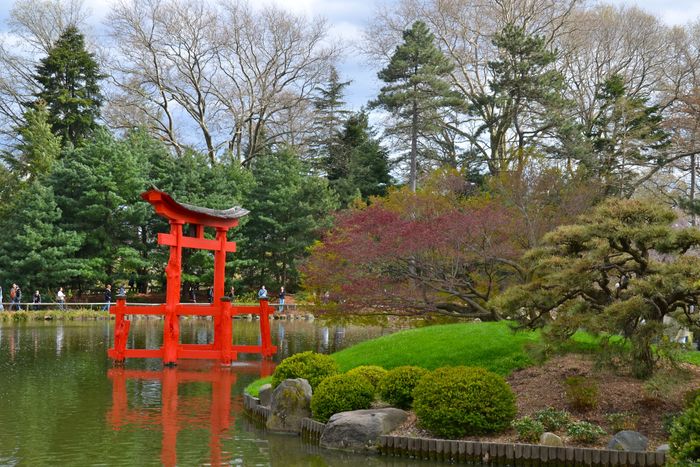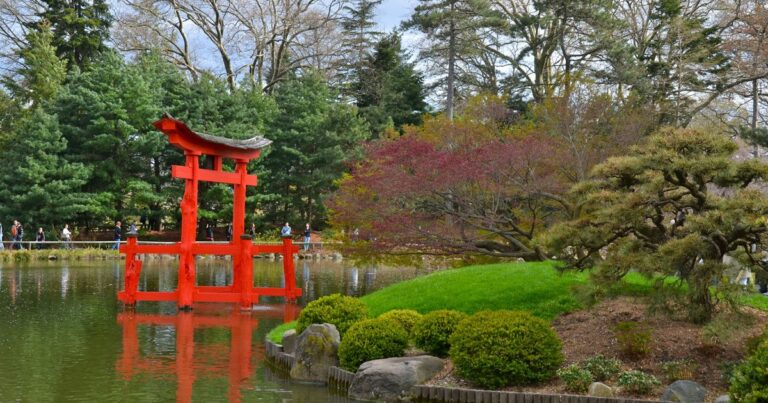
The Brooklyn Botanic Garden, where a six-year battle against shadow-causing development proposals, has finally been settled.
Photo: Victoria Lipov/Shutterstock
After a yearslong battle and many, many development proposals, there will be sunlight at the Brooklyn Botanic Garden and at least some new affordable housing in Crown Heights. The Botanic Garden and Ian Bruce Eichner, the CEO of Continuum Companies, have reached a deal that will protect the garden’s greenhouses from shadows and allow the developer’s Franklin Avenue project to finally move forward, according to the Botanic Garden.
The terms agreed to by both parties will allow Continuum to build a 10-story tower (9 stories on the Botanic Garden-facing side) with 355 apartments, 106 of which will be affordable, albeit to people in higher income brackets. (The affordable units will be mostly “workforce housing,” set aside for those earning between 80 and 120 percent of the area median income, which for a family of four would be about $124,000 to $186,000. Ten percent will go those earning 70 percent.) The project, with the backing of Councilmember Crystal Hudson, will come before the City Council’s Zoning and Franchises Subcommittee on Tuesday, followed by a vote on Wednesday by the Land Use Committee. “After more than six years of discussion, debate, and vigorous public advocacy, the threat of permanent loss of sunlight for our living museum of plants is over,” Benepe said in a statement this morning.
Additionally, the building’s sloping roof plane will be reduced to ten degrees, “allowing for necessary sunlight to reach the Garden’s plant nursery and other crucial areas,” according to the BBG. That’s down from the 15 degrees that the City Planning Commission approved in September. At that time, Eichner surprised everyone by saying he would withdraw his application for the project after winning city approval. Continuum claimed that reducing the angle of the plane would knock the number of units down from 475 to 355, making the affordability requirement financially unworkable. Using a different affordability formula with a higher-income bracket, however, apparently changed the calculus, allowing the project to move forward.
When I spoke on the phone with Benepe this morning, he said that the ten-degree slope deal, negotiated by Hudson, who promised not to back any proposal that would harm the garden, would result in a “negligible shadow” — no worse than if Eichner built under the current zoning.
Continuum’s original development proposal would have brought two 39-story towers to the site of a spice factory on Franklin Avenue, between Eastern Parkway and Empire Boulevard. That proposal, despite considerable sweeteners — half of the 1,500 units were slated to be affordable, and it was to be financed and built by unions — was ultimately defeated because of the shadows it would have cast on the Botanic Garden’s greenhouses and some of its conservatories. At the time, Adrian Benepe, the Botanic Garden’s president, frustrated with what he described as unreasonable proposals, argued that Eichner should build what the area’s zoning allowed — that is, a relatively low-rise development of six stories. Eichner argued that building what zoning allowed would mean a market-rate development — that is, condos. This smaller, squatter proposal, which will also be funded and built by union labor, dates to 2022.
But despite some tense negotiations — at one point, Eichner offered the garden half a million dollars to install lights and other equipment if it agreed to the 475-unit plan, an offer the garden flatly rejected — the two sides did finally reach an agreement this time around. That, while involving a lot less affordable housing, won’t imperil the garden and is a better outcome than an empty lot or an entirely market-rate development. It’s scheduled to go before the full City Council on November 21, where, following protocol in which the Council follows the lead of the local councilmember, it should be approved.
